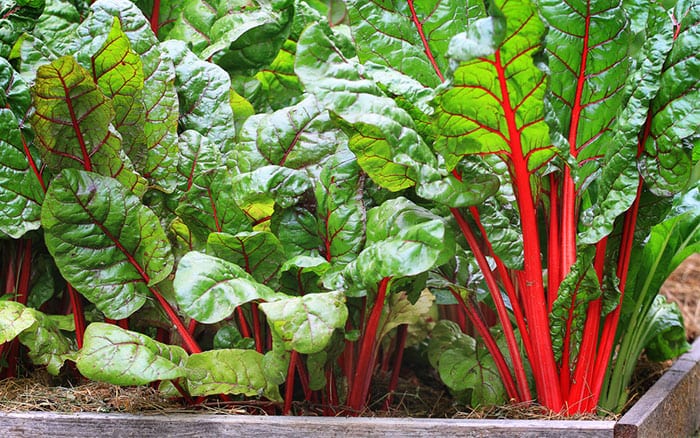You can’t go wrong with Swiss chard, whether you’re new to growing veg or are a seasoned gardener. It’s easy to grow and with leaves ready to harvest as little as 4 weeks from sowing, it’s a must-grow veg in the garden.
Growing Swiss chard
When sowing Swiss chard from seed, get them into the ground between March and July at a depth of 2.5cm, 10cm apart, with 45cm between rows. Over these months, the seeds can either be sown directly outdoors, or sown indoors in trays and planted out once they’re big enough to transplant.
Another fantastic thing about growing chard is that it can be successionally sown through the season. Sowing seeds every two weeks will give you a constant supply of leafy veg to add to dishes for harvests all year round.
When the seedlings are big enough to handle, they can be thinned out. At this point, you’ll be able to see the stunning colours of the stems. The weakest seedlings can be removed to leave 30cm between the strongest ones. However, you don’t need to discard the thinned-out seedlings. Instead, the leaves can be used in salads as micro-leaves.

Take good care
Keep moisture up in dry spells by watering well. Then, to ensure moisture is retained, mulch the base of the plant with garden compost. As well as keeping moisture in, it’ll also suppress weeds.
You can have harvests all year round, but to keep the crops protected through autumn and winter place a cloche over the plant or mulch the base and top with horticultural fleece. This will keep them insulated over winter.

Harvesting
The leaves can be harvested for months just from one plant. Harvest the outer leaves first by cutting them off when they are young, and work inwards to the inner leaves.
Regularly harvesting the leaves will encourage more to grow.
The stems and leaves are both edible, although the stems will need a little longer to cook because they need to soften. Roasting Swiss chard stems as a side dish is a little different but delicious and very colourful.
Swiss chard is impressive when it comes to nutritional value. It’s a great source of vitamin K, A, C, and magnesium. Not only that but it’s low in calories, so is great to bulk up in dishes such as salads, stir fries, and omelettes.

Watch out for…
In humid weather, mildew and grey mould can cause issues and make the leaves unpleasant looking and tasting. To keep this at bay, improve air circulation by making sure there’s plenty of space around the plants.
Birds may also want to snack on the chard, especially as seeds or seedlings. Covering the crops with horticultural fleece as a layer of protection is a way to ensure you beat the birds to your crops.

Types to try
‘Bright Lights’
The stems of this variety are a rainbow of colours. Making them a great addition to raised beds full of veg or within ornamental beds and borders where it can add vibrancy and foliage interest.
‘Fantasy’
This variety has deep red stems and has a high tolerance to downy mildew, making it largely trouble free. Growing up to 50cm tall in a sunny or partially shaded spot, this chard has a delicious juicy flavour.
‘White Silver’
This isn’t as colourful as the other options, instead it has thick, white stems. Versatile in the kitchen, planting it near to the back door makes it perfect for picking and adding straight to dishes.


Leave A Comment